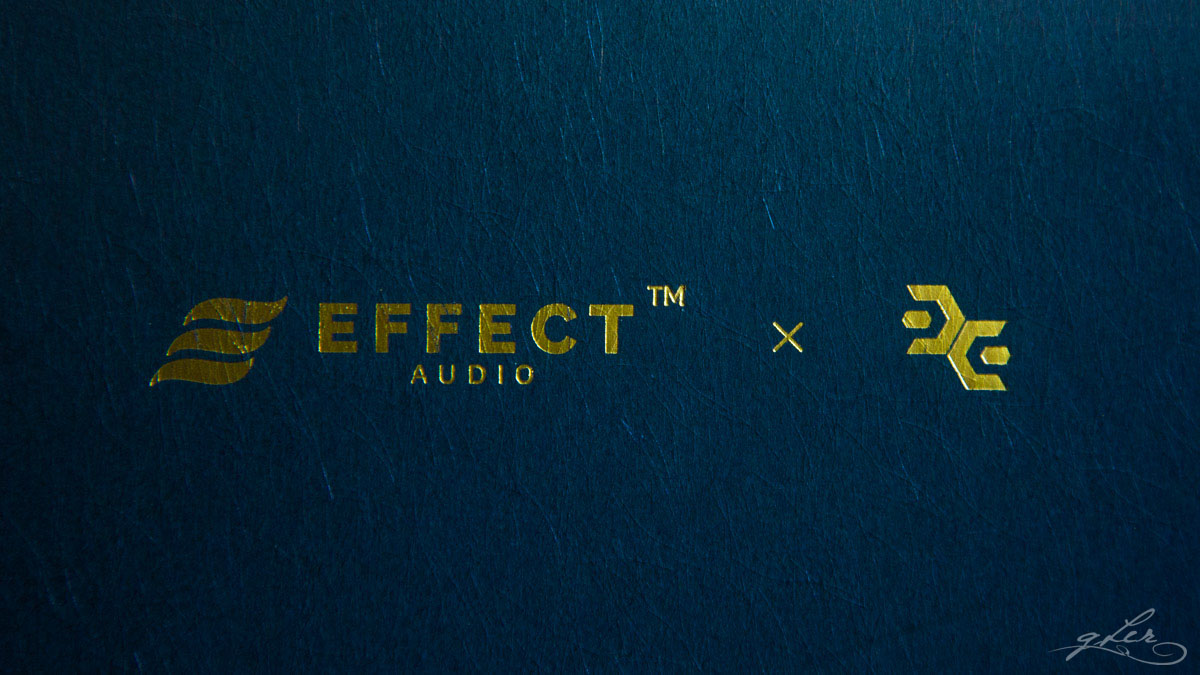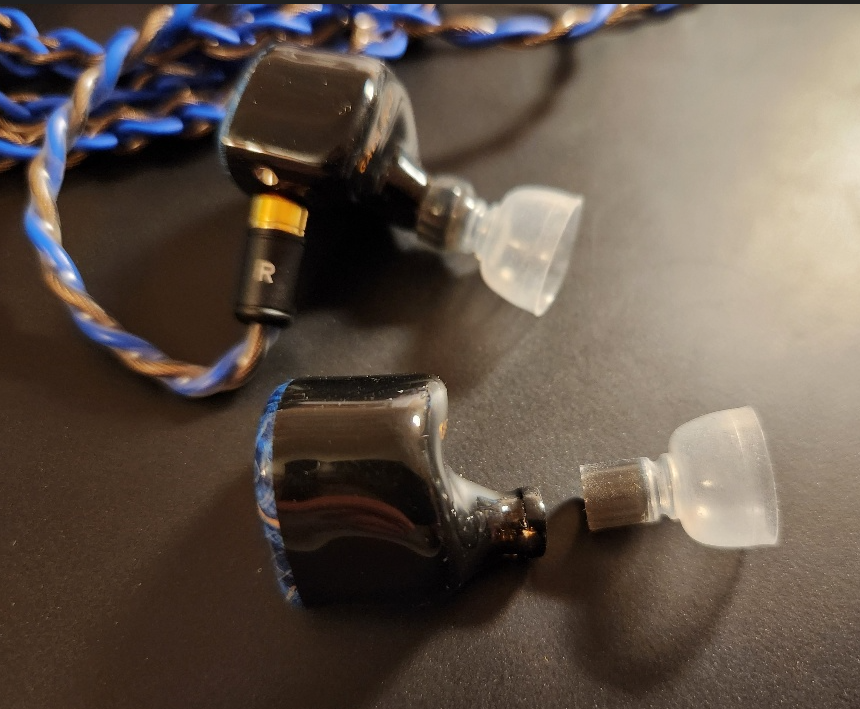Effect Audio x Elysian Gaea Review: A Clear Conundrum
I’d like to thank @EffectAudio and @JordonEA in particular for sending me a Gaea sample in exchange for my honest review. I have not been asked or influenced to shape my review in any way, and the views expressed below are entirely my own.

It’s always interesting when a cable company ventures into IEM design, but unlike Effect Audio’s previous homegrown effort, Axiom, they’ve partnered with a specialist IEM maker in Elysian Acoustic Labs for their new collab, Gaea.
QM Lee, the mastermind behind Elysian’s now-famous Annihilator and X flagship IEMs, is renowned for his tuning prowess. Going against the grain of bass-fronted designs, his IEMs are in essence perfect contradictions, often featuring strident, elevated midrange or treble that somehow still presents as silky smooth and balanced, with exceptional quality.
If you’re looking for the same sort of funky tuning and Elysian DNA in Gaea, you’re in luck. This is not your traditional IEM by any stretch, and even though the marketing spiel speaks of earthiness and female vocal bliss, as you’ll soon see, it’s not exactly what you’re getting.
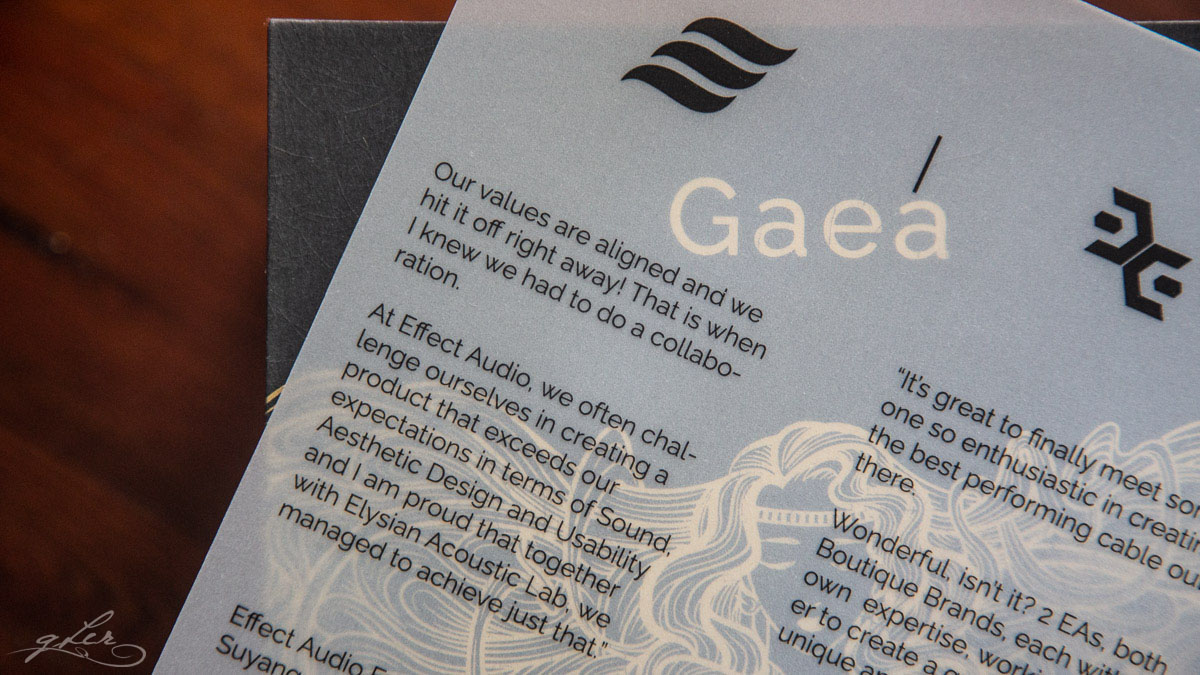
Packaging and accessories
Priced at $1,300 retail, Gaea is a premium product by any measure. It ships in an environmentally-friendly gold-flecked black cardboard box, adorned with an intricate gold foiled design of the primordial Earth goddess herself.
Removing the lid reveals a translucent sheet inscribed with a feel-good greeting from (EA founder) Suyang and (the other EA’s) Lee, beneath which the blue stabilized wood earpieces nestle inside matching foam core cutouts. The top tray holding the earpieces lifts away to expose an accessory box that holds two smaller boxes, one labeled ‘Ear Tips’ – one set of SpinFit’s new medical-grade W1 tips in three different sizes; the other labeled Cleaning Kit – a lint-free cloth and wax picker brush.
EA also includes a sturdy felt-covered case with a magnetic lock and internal mesh pockets that comfortably holds the IEMs and cable along with the packaged accessories. Just be aware that the cover material will attract every bit of dust, hair and fluff it comes in contact with.

Design and fit
This is my first encounter with an Elysian IEM, and I believe it represents the new smaller shell design Lee is rolling out for his other IEMs too. It’s still a fairly chunky IEM, nicely finished in a thick-feeling solid gloss black resin shell and lacquered blue wood faceplates. EA and Elysian logos are emboss-foiled in gold on each earpiece respectively.
While the shells themselves aren’t too cumbersome, I find the nozzles on the thick and fairly long side, which usually spells trouble for my small ear canals. Sadly, my fears were confirmed as soon as I tried to fit one of my go-to eartips, Sony’s EP-EX11, onto the bulbous nozzles. No go…they stretched over the nozzles with some difficulty, only to pop back off almost immediately. Spiral Dots were the next tips I tried, and while they slid on easily, they also slid off easily, remaining firmly wedged in my ears. Final’s E-Type tips were only marginally better; I managed to get them on, but eventually one or other tip slid off the nozzle.
Long story short, only Acoustune AET07 and the stock SpinFit eartips seemed to fit. Even then, the smallest size stock tip was too big for me, which meant the nozzles couldn’t sit very deep, leaving the earpieces to dangle from my ears, balanced on the stems. This wasn’t totally uncomfortable, given how light the earpieces are, but a word of warning to anyone with similar ears to mine: this is not the most comfortable IEM I’ve used, nor could I use it for anything but shorter sessions without some sort of discomfort.
On a positive note, I really like the colour-matched cable, with its stabilized wood splitter. The cable itself features gold and blue EA Ultra Flexi plasticated sleeving, with a combination of 24awg OCC copper litz and silver-plated copper litz wires. It also features EA’s proprietary ConX system, letting you switch from the stock P-Ear connector to mmcx or 2-pin connectors for use with other IEMs. P-Ear is meant to be a sturdier variant of the swiveling mmcx connector, though I found it to be more fragile and prone to bending than the shorter, stockier mmcx connectors I have on other cables.

Tech and specs
Gaea is a five-driver hybrid IEM, with one Foster-made dynamic driver for bass and four Sonion balanced armatures covering mids to highs. A four-way crossover connects the bass dynamic driver with the low-mid BA, mid-high BA and two high-frequency BAs. The dynamic driver is dual vented (DiVe Pass II Dual Ventilation Technology in marketing-speak), primarily to prevent driver flex from what I understand.
With a 10-ohm impedance at 1khz and a nominal sensitivity of 102db at 1khz, Gaea is not difficult to drive. It needs 5-10 clicks less juice than most of my other IEMs, volume matched.
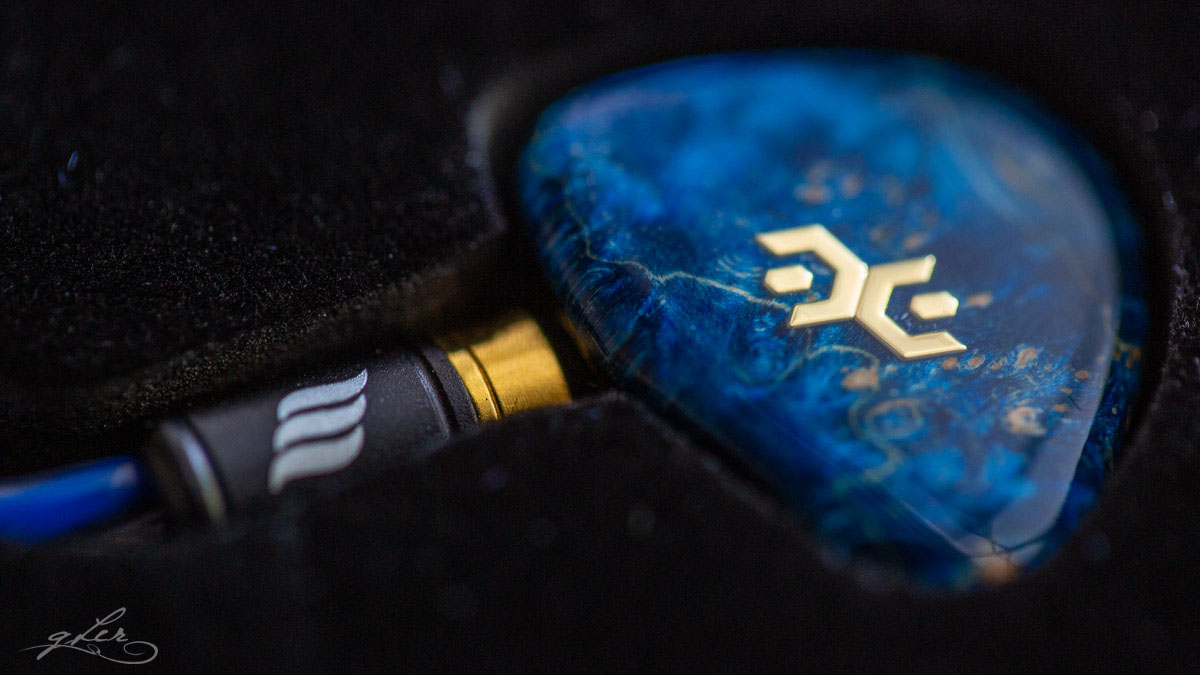
Sound Impressions
First and foremost, your impressions of Gaea will depend on the tips you manage to fit on them. As mentioned earlier, I couldn’t get any of my go-to tips to fit, and even the stock tips were a struggle, both to get onto the nozzles and then into my ears. The two tips I liked most with Gaea are Final E (when they stay on), and, more consistently, the stock SpinFit W1 tips.
Tonally, Gaea has a U-shaped tuning profile, with a moderately emphasized (10dB) sub-bass shelf, a ‘generously’ elevated pinna gain/upper-midrange, and a likewise elevated but un-peaky treble response. If I were to sum up the sound presentation in three words, I’d say clear, crisp and aggressive. This is not a sit back and relax sound, nor a warm and romantic sound. It’s in your face, all the time, with no letups.
To break it down for you, I’m going to flip the usual bass-mids-treble order because I feel Gaea is a treble and mids-first IEM.
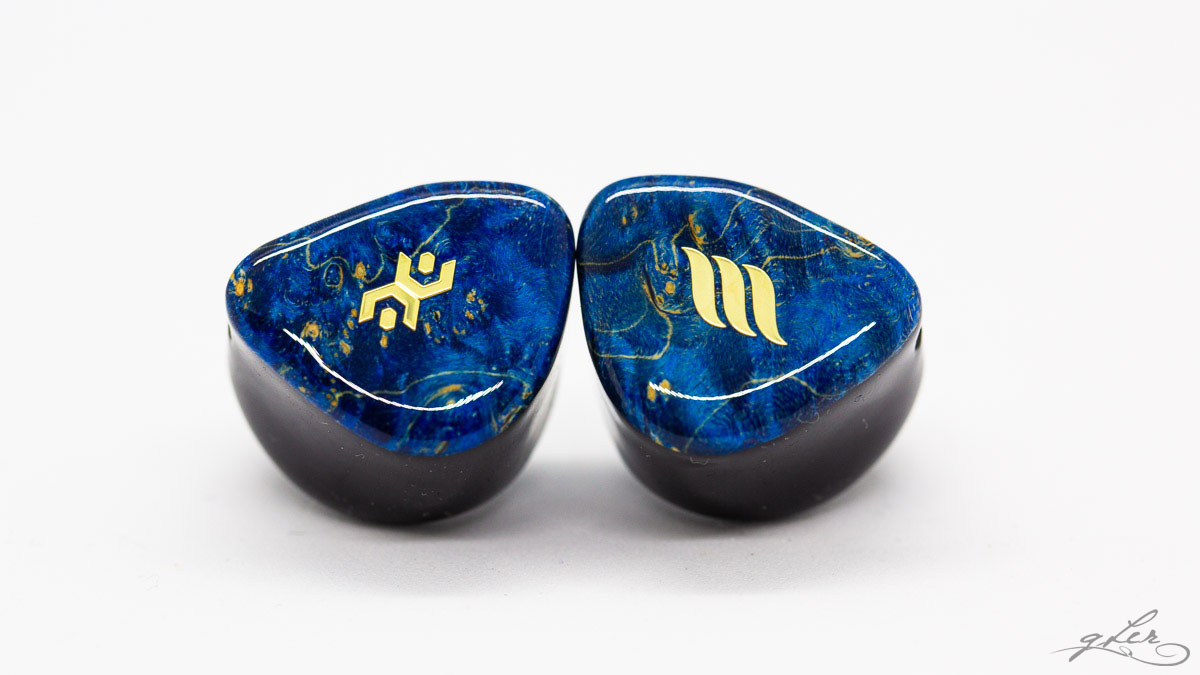
I’m no treblehead, quite the opposite, but I respect and appreciate good quality treble, and Gaea has that in spades. Elysian is known for its treble tuning quality, and Gaea is no different. Even though it lacks the e-stat drivers of higher-end Elysian-made IEMs, the Sonion BAs used here are tuned to perfection, delivering a crisp, energetic yet smooth and evocative treble.
Listen to Miri Ben-Ari’s violin solo in the build-up to Armin van Buuren’s Intense, and you’ll hear the soaring intensity of the strings with almost pitch-perfect timbre, for example. String sections of classical pieces like Max Richter’s recomposed version of Vivaldi’s Winter 1 is another good example. But keep in mind this is not necessarily a true-to-life reproduction; I find treble levels elevated well above the norm, to my ears, and coupled with the even-more-intense upper midrange, the ‘wall of treble’ sound can be unnerving if you’re not used to it.
This makes Gaea a bright-leaning IEM. Sibilance is actually very well controlled – better, in fact, than many less-trebly IEMs – and while much of that is tip-dependent, this is still ranks as some of the better ‘elevated’ treble I’ve heard in an IEM.

If Gaea’s treble is too much for you, hold on to your hat when you hear its midrange. There’s so much presence and energy in the midrange – especially the upper midrange – that you’ll struggle to hear anything else above the din.
Lower midrange is neutral, maybe even dipped slightly below neutral, so male vocals, come off a bit thin, especially without any added midbass support (see below). Some male vocalists like Neil Diamond sound less raspy or chesty in their performance (Hello Again a great example from the fabulous The Jazz Singer LP). Higher-pitched male vocals, like the Weeknd’s contribution to Lana Del Rey’s Lust For Life, are pushed further up the octave scale by the steep rise to the upper mids, so are generally exempt from the low midrange dip.
Female vocals, however, are where the designers seem to have set their sights. There’s a real presence and forwardness to female vocal music, even though quality swings between perfectly sweet and wincingly shouty. If you’re a fan of bright, articulated, crispy vocals of the female persuasion, you’ll find a great partner in Gaea; not so much if you’re after the soft, soothing and romantic.
Listen to Rosie Thomas singing Why Waste More Time and you’ll think exactly that (I actually turned it off pretty quickly). Rosie has a beautifully articulate and young-sounding voice, very closely micced, but Gaea makes her sound like a pre-pubescent teen. I’m not a K-pop/J-pop listener, so I’m not sure if this is the effect that lovers of this type of music go for, but if it is, they'll want to give Gaea a listen.
More energetic female vocals, like Nevve in Seven Lions’ Island, are so bright you’ll want to wear shades before pressing play…but, that could be a good thing if you want that sort of energy in your life. Likewise, Ilan Bluestone’s Will We Ramain sounds epic on Gaea, and even though I personally find it too much, I’ve spoken with many who don’t.
Real instruments, on the whole, fare quite well. Timbre is believable, and even higher-frequency midrange sounds, like stick hits and shakers, don’t land with too much zing. As midrange blends into the treble, it maintains a fairly even keel, and there are no sudden spikes up top that make instruments or vocals sound ‘off’, as is the case with some overexuberant upper-midrange and lower-treble-elevated IEMs.

Bass is where I have most of my issues with Gaea. Even though I don’t enjoy an elevated midrange, I can respect the tuning for where it’s aiming. But I’m far more particular about bass delivery, and while I get that the bass here is mostly meant to support the upper frequencies, I don’t think it does so particularly well.
Delivered by a Foster dynamic driver (the same driver used in Elysian’s current flagship, Annihilator), the bass is focused more in the sub-50Hz sub-bass region, with a linear drop towards the lower mids. That’s not the issue, since I actually prefer a sub-bass focus. What I don’t like I how fast the bass decays. It sounds unnatural to me.
The big bass drums that kick off A Fine Frenzy’s Elements are punchy, sure, but they decay so quickly you’d think you’re listening in an Anechoic chamber. There’s also a lack of sub-bass extension that renders the subtle sub-bass rumble in Kristin Hersch’s Your Ghost almost inaudible, especially with the elevated midrange placing the accompanying guitar strums far further forward than I’m used to.
While the driver is adequately vented, giving it more room to fully express the bass notes, I actually find the bass levels too low and the delivery too fast to balance out the rest of the frequencies. As such, I find bass notes are too often masked by the elevation of the other frequencies, upper midrange in particular.
All of the above suggests the bass is tuned to play a supporting rather than a leading role in the mix, and that’s exactly how I hear it. There’s a flatness to the bass delivery that means it never dominates, even where bass weight is called for. It lacks some of the richness, detail and texture you’d expect from a more forward bass presentation, and so if you’re someone who prefers bass that lays a foundation for the music and does little else, you’ll probably find Gaea to your liking. Bassheads, or even bass enthusiasts, won’t find much to like here however.

Technically, Gaea is a very competent performer. Resolution, partly due to its clean and extended treble, is excellent, though not quite class-leading. Stage is natural, with decent width and depth, but can start to feel cramped when music gets busy, especially bright busy. When that happens, instruments tend to smear and vocalists shout over each other. Play the crescendo to Daft Punk’s Contact and you’ll feel every shred of the violent interstellar explosion it depicts.
Instruments and vocals are otherwise well separated, but imaging is just ok. I get a good sense of where instruments are placed on the stage, but it’s more a general layout rather than pinpoint precision. That’s probably because some sounds, especially higher pitched metallic instruments and guitar strings, tend to dominate.
Gaea is quite dynamic, especially in midrange- and treble-dominant tracks. It’s an exciting, involving listen, not an IEM I could ever kick back and relax with. There’s an energy to the sound that can be quite fun with the right music (electronic music in particular), and those who love their jazzy music aggressive, their Dire Straits crispy, and their electric guitars crunchy, are going to enjoy the ride.
Conversely, it can be quite unforgiving of poorly recorded and brighter, compressed music. Modern pop would have to be well mastered to sound good without overloading, especially female vocal-fronted pop, and I’m not convinced you’ll survive a strident soprano opera with these.
Overall, Gaea is certainly…different to what I’m used to. Right off the bat it doesn’t have the bass quantity or quality I enjoy, but is not the worst I’ve heard here by any stretch. Midrange, while rich and dominant, is somewhat overdone, and treble, well, there’s lots of it too, but in a good way.
It’s not your mainstream tuning, and it can be peaky and coloured with many genres. But for those wanting something that challenges convention, and eschews the usual bass-dominant tuning of many modern (Western-tuned) IEMs, it could have much appeal. If you love your treble, and aren’t sensitive to upper-midrange forwardness, you may even find Gaea to be right in your lane.

Pairings and comparisons
I won’t be going into source pairings in detail, so I’ll just say that Gaea seems to be quite source-sensitive. For example, I found it far more agreeable using Sony’s smoother, more evenly-tuned WM1Z compared to HiBy’s RS6, which tends to double-down on upper-mid-forward IEMs. HiBy’s new RS8 R2R flagship was even better than the Sony, although possibly less forgiving of Gaea’s upper-mid stridency.
Just be aware of this when auditioning Gaea for yourself, and unless you’re a masochist, try avoid overly bright sources.

Campfire Audio Supermoon ($1,500). Campfire’s new single-driver planar was designed specifically as a custom IEM, so a direct comparison with Gaea isn’t really fair, especially when it comes to comfort. Sound-wise, Supermoon’s is a bass-dominant tuning, with a more neutral midrange and sparkly, extended, but not quite as elevated treble as Gaea’s.
Both IEMs have a brighter and arguably slightly ‘digital’ tonality, but I do find Supermoon sounds smoother through the bass to midrange transition, especially with vocals. Supermoon’s treble can display some metallic timbre or digital ‘glare’ on occasion, but where it doesn’t, I find it to be an easier listen than Gaea with my library.
Where Supermoon is, to me ears, unarguably superior to Gaea is resolution, cohesion and staging. Gaea is more dynamic, and the its higher frequency delivery is more natural. Your choice between these two will come down to how much brightness you prefer up top, and in turn, which one plays better with your music library.

Sony IER-Z1R ($1,800). I find it quite ironic that the IEM that’s roundly considered one of the least comfortable for many users is significantly more comfortable in my ears than Gaea. The Sony’s thinner, shorter nozzles work better with my ear anatomy (small ear canals), and also take a much wider range of tips without issue.
Sonically, I consider the Z1R’s bass almost peerless, with a deep, weighty, powerful and articulate sub-bass to midbass elevation that gives music a cavernous space in which to play. Compared to Gaea's anaemic bass, it's no contest. While Sony's midrange is considered recessed by some, I hear it as very clear, clean and more analogue-sounding than Gaea’s. Male vocals on the Sony are quite neutral, like Gaea’s, while Gaea’s female vocal delivery is notably more forward and less natural or organic than Sony’s.
Treble is interesting, because both IEMs have excellent quality treble. I feel Gaea’s treble quality is slightly handicapped by its upper-midrange aggression, though, while Sony’s, by comparison, is sparkly and precise but also more elevated in the lower treble, which could be bothersome for those with a lower treble sensitivity. Technically, I feel Z1R has the upper hand across the board, though you could argue the two are more similar than different in resolving ability and dynamics.
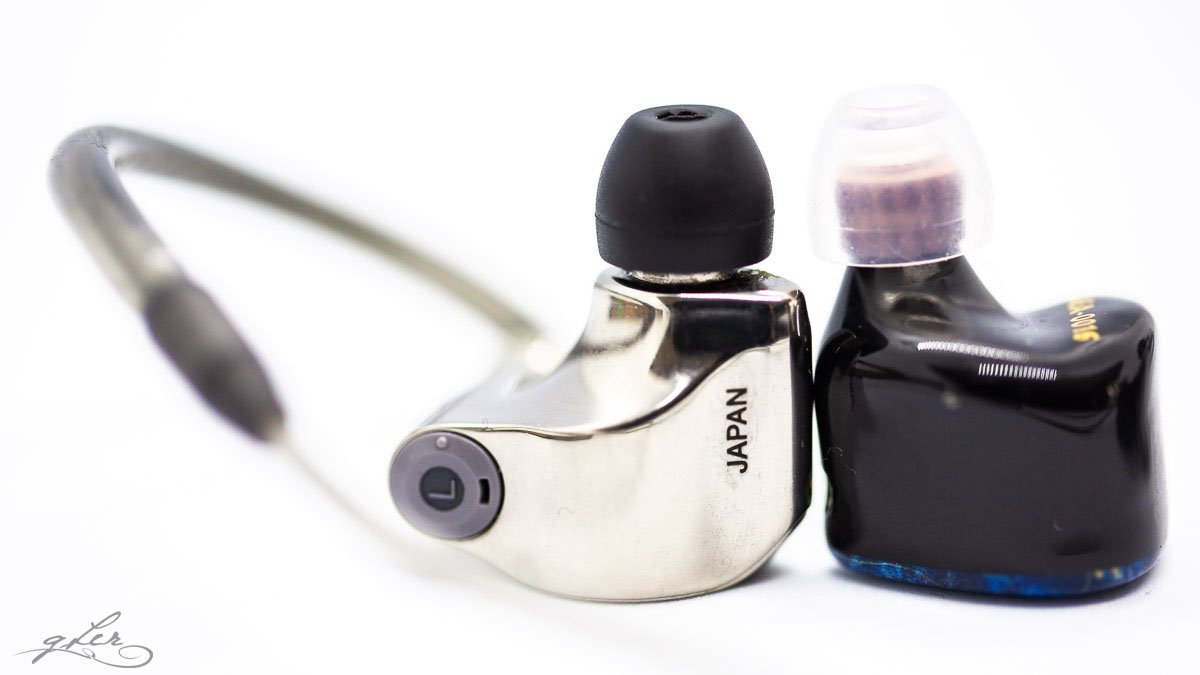
Closing thoughts
I’ve read so much about Lee and his uniquely-tuned IEMs, but until I tried Gaea for myself, I couldn’t quite make sense of them. Fast and aggressive but also…smooth? Bright and clear but also…balanced?
These are just some of the contradictions I hear with Gaea, and while I can categorically say that it’s not the type of sound I go for, I can see why so many people enjoy it.
Ironically, I like it least for the ‘theme’ it represents: earthy female vocals. Gaea makes female vocalists sound much younger and more aggressive than they are, and some male vocalists too, but I think that was the intention. If you want a warm, organic, jazz lounge-type tuning, or something to relax or mediate to, I don’t think Gaea is the right fit. But for gym workouts, motivation sessions or some headbanging fun, why not?
Cosmetically these are well-made IEMs, befitting their premium pricetag. While I personally have issues with the chunky fit, that’s specific to my anatomy, and I’ve seen very few complaints from others in this regard.
I think Effect Audio made the right move by enlisting a reputable and talented IEM tuner like Lee for their Axiom follow-up. This is a much better IEM all-round, and while it hasn't quite won my approval, it could very well win yours.
